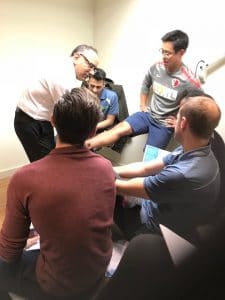
Injuries can seriously hinder any workout routine you may have. If you’re a person of habit, an injury is not only uncomfortable or painful but extremely annoying. This can result in you itching to get moving again but when the injury hasn’t healed properly. Once symptoms of your injury have improved, you should take some precautions before pushing yourself.
Wait Until All Symptoms Have Gone
It may seem obvious, but for those who are eager to get going again, they may ignore what their bodies’ are trying to tell them. If you still have pain, swelling, inflammation, stiffness, irradiating heat from the injury or any other symptoms, then continue to rest.
See Your Doctor Before Starting
This is particularly important if your injury required medical attention. Even though you may feel fine and ready to go again, a doctor or a physiotherapist will be able to detect smaller signs that an injury is still there.
If you returned to your activity before the injury has fully healed, then your recovery will take longer or make the injury worse.
Learn From Your Injury
Once you’ve been given the ‘all clear’, it’s easy to start again. But you should spend some time preparing to change your approach to your regime. How did you injure yourself? Was it preventable? If so, how do I avoid it in the future?
Create a ‘Post-Recovery’ Exercise Plan
If you were running five miles a day before your injury, then you will likely be able to reach that again. However, you need to be patient as a few weeks off will weaken the muscles and your injured area will need time build up again.
That’s why you should create a ‘post-recovery’ exercise plan. A good guideline is to start off slow – approximately half as intense as your peak ability and then increase it by 10% each week. You should consider increasing the warm-up and cool-down time to avoid further injury. If the symptoms for your injuries appear again, you should stop immediately.
Diversify Your Workout
If your injury is limited to one area of your body, such as your elbow, consider doing exercises that work another part of your body – such as cycling. Also consider switching to a low-impact sport for the duration of your ‘post-recovery’ exercise plan, such as swimming.
Listen to Your Body
Repeating an earlier point: if any of your symptoms return, stop. Don’t try and push past the symptoms to make gains. A little pain or discomfort is common when exercising but it should not be agonising.









